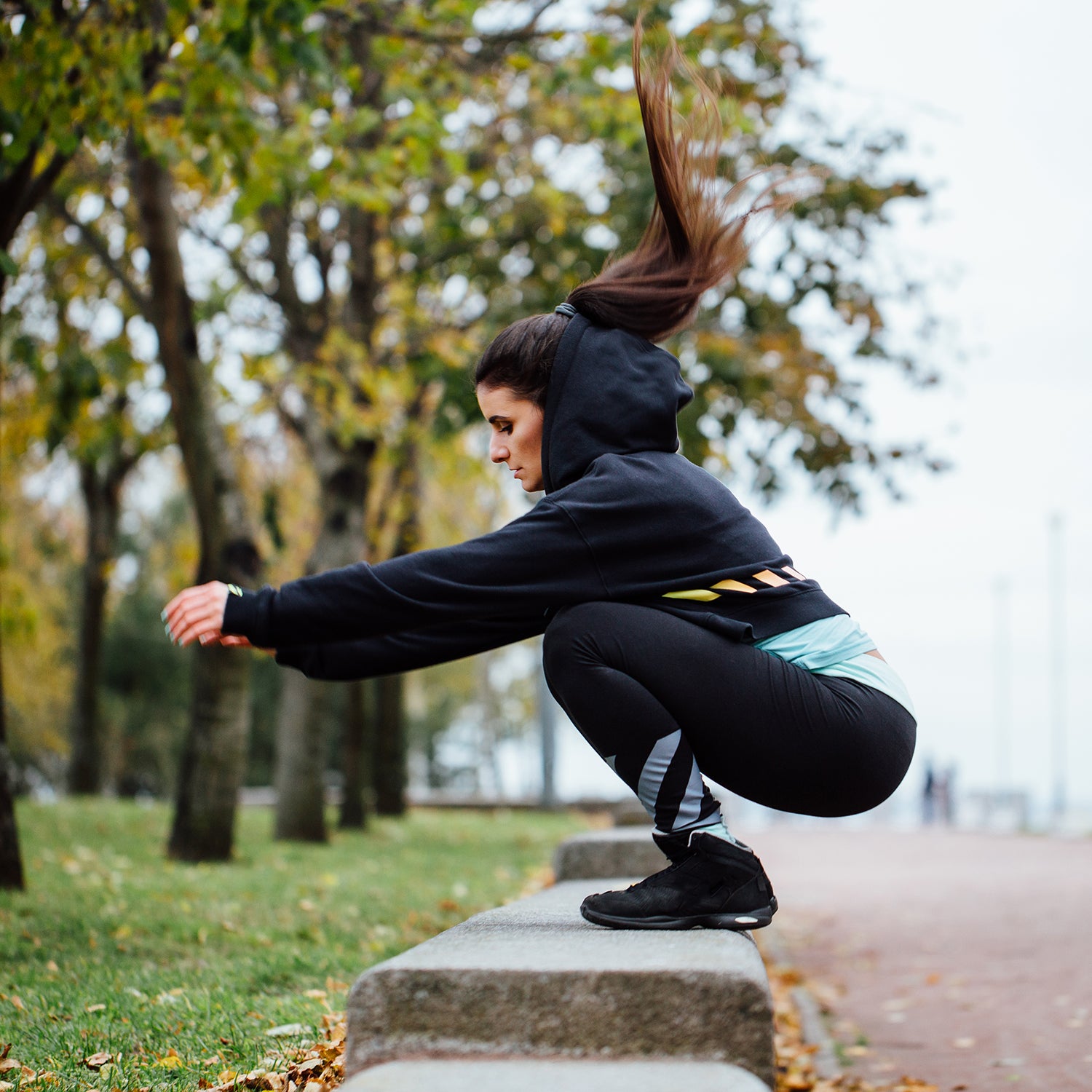Box jumps are a foolproof way to gain power and strength. Find an elevated surface. Jump. Repeat. Master it, and you’ll build reactivity, agility, coordination, and balance, says Go Green, personal trainer and CrossFit instructor at in New York City. These traits are key to improving your performance in outdoor sports.
The functional exercise is also super-efficient, because it incorporates explosive movement and cardiovascular efforts. “You’ll tap into fast-twitch muscle fibers that are not usually hit during leg presses and leg extensions,” says Green. When you perform a box jump, you contract and then vigorously extend multiple muscles all at once—the quadriceps, hamstrings, glutes, calves, and core—to get up to the box. When you land, you’re using major quad strength to control the descent. Working the fast-twitch muscle fibers trains your body to generate more force, explains Annie Padrid, trainer and owner at , a training facility in Chicago. That means you’ll improve in things like running inclines, pushing off a foothold, and jumping over obstacles in your path.
If you’re new to box jumps, Green recommends starting out with other related plyometric moves, like squat jumps, tuck jumps, and split jumps. When you’re ready to test out the box, start with step-ups: Place your right foot on top of the box, making sure the entire foot is making contact with the surface. Push through your right heel to pull your body up to the box. Step onto the box with your left foot. Reverse the movement. Switch sides; repeat. Got that? Now you’re ready for the real deal.
Nail the Basics
Start small using a stepper or smaller box, then work your way up to higher boxes, says Padrid. Wood or foam versions will do.
Stand with the box about a foot in front of you, arms by your sides. Hinge from the hips and bend your knees to send your butt back and down, slightly higher than a squat. Bring your arms back in line with your torso, then drive them forward as you jump up, standing tall—the momentum from your arms will help you get to the top of the box. Land on the box on your heels with both feet and knees bent. “Landing on the heels places much of the weight of the jump into your glutes and quads, rather than your joints,“ says Padrid. To further reduce the impact on your joints, step back down to the ground instead of jumping, she says.
Scale It Up
Once you’ve mastered the traditional box jump, these progressions will ensure that you continue to develop more strength and power over time, says Green.
Seated Box Jump
Starting this variation seated decreases the amount of power you’re able to get from your muscles, because you’re forced to generate the same jumping movement with far less momentum. You’ll focus on the explosive portion of the move—the part where you move upward—which helps build leg strength.
How to Do It: Position a box about two feet away from a bench. Start seated on a bench facing the box, feet flat on the floor, knees stacked over ankles. Press through your feet as you lean forward, extending through the hips and knees to jump up and forward. Land on the box with both feet, bending through the hips and knees. Step down and return to start. That’s one rep. Do five reps.
Single-Leg Box Jump
Moves that work one side of the body at a time (known as unilateral exercises) ensure that one side of your body is never overcompensating for the weaknesses of the other side. As a result, both legs will be stronger if worked separately, and you’ll be less prone to common endurance injuries like IT band syndrome and hip flexor strains.
How to Do It: Stand on one foot with the box about a foot in front of you, arms by your sides. Hinge from the hips and bend your knees to send your butt back and down. Swing your arms and the nonjumping leg to create momentum as you push through the working leg to jump onto the box. Land softly on your working foot, bending at the hips and knees to control the landing. Step down and return to the start. That’s one rep. Do five reps. Switch sides; repeat.
Depth Jump
Combining two jumps in one move pushes your muscles to create as much force as possible in a short amount of time, because you’ll have no chance to recover between the first landing and second takeoff. This helps build speed in your explosive movements like hill sprints, sharp ski turns, and cycling surges.
How to Do It: Set up two boxes or benches with two to three feet between them, one 12 to 16 inches high, the other 22 to 30 inches high. Stand on the shorter of the two boxes with your feet hip-width apart, toes just over the edge of the box, arms at your sides. Jump off the first box to a point midway between the two boxes, landing softly on the balls of your feet with bent knees and without dropping your heels to floor. Immediately jump onto the higher box, driving your arms to increase momentum. Land softly on your toes before lowering your heels to the box. That’s one rep. Do five reps.


